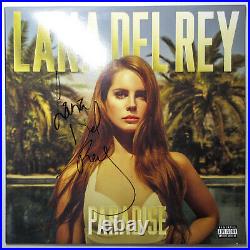

The lyrics are about love, sex, and drugs, and features prominent references to 1950s and 1960s Americana. A predominantly baroque pop and trip hop album, Born to Die features the same cinematic composition. The album was reissued on November 9, 2012, as an expanded version subtitled The Paradise Edition.īefore the album's release, Del Rey had attracted attention with her 2011 singles "Video Games" and "Born to Die", which contrasted contemporary electronic/dance music with their cinematic sound accompanied by dramatic string instruments. It was released on January 27, 2012, through Interscope Records and Polydor Records.
#LANA DEL REY ALBUM COVER BORN TO DIE SERIES#
Though the series fails at many of its basic entertainment goals, it is effectively able to capture the glory and downfall of scamming that so intrigues American culture.Born to Die is the second studio album and major-label debut by American singer-songwriter Lana Del Rey.


Shonda Rhimes recently adapted this story into a Netflix miniseries, “Inventing Anna” (2022), which attempts to translate Anna Delvey’s crime trajectory into a television drama. Delvey built herself a life as a fake German heiress and New York socialite and was ultimately arrested for defrauding banks, hotels and friends of thousands of dollars. Still, none have captured this scamming fascination quite like the story of Anna Delvey. This fascination is heavily represented in the media, whether it be feature films on Tammy Faye Bakker using her televangelist audiences as cash cows or the journalistic fascination with Caroline Calloway and her steeply priced ‘creativity workshops.’ Elizabeth Holmes, famed fraudster and biotech giant, has both a buzzy miniseries and film about her coming out soon. American pop culture loves a scammer, especially when an individual uses the self-improvement narrative foundational to our economic system for personal, albeit criminal, benefit. We are living through a scamming golden era. The Netflix logo is pictured.Courtesy Wikimedia Commons. Del Rey thinks we’re all “Born To Die,” but ironically, that is anything but the case for the album itself as it continues to live on in the mainstream. Only time will tell, but if I’ve learned anything from the first ten years of “Born To Die,” it’s to expect deserved, retrospective praise. Who knows, maybe it will be revered as the greatest work of the 2010s and alternative music. It’ll be interesting to see what lies ahead for “Born To Die” and Lana Del Rey in the next ten years. To have the same draw to an album throughout many different stages in my life and the lives of so many other fans highlights the masterpiece that is “Born To Die.” Even today, I find myself putting the album on repeat as I work on projects for class. The quality of “Born To Die” lasts the test of time. Clearly all the album needed was time for people to see the value in Del Rey’s work. When NME released its decade-end lists for the best albums of the 2010s, “Born To Die” surged up to the 10th best album of the decade. In 2016, New Musical Express ranked “Born To Die” as the 45th best album of 2012. Despite the criticism of her earliest works, she continued to produce record after record that slowly hooked critics on her talent.


 0 kommentar(er)
0 kommentar(er)
